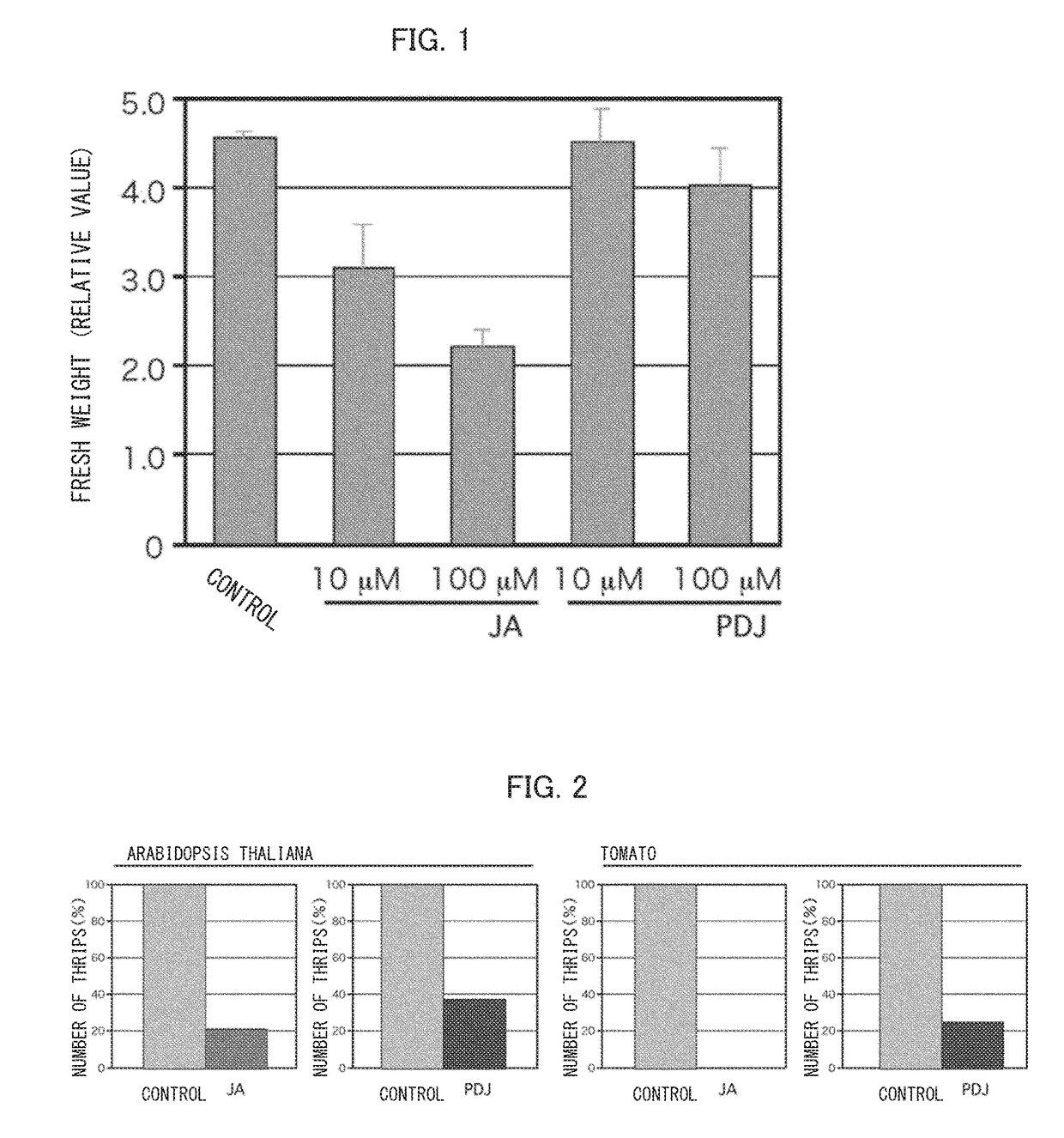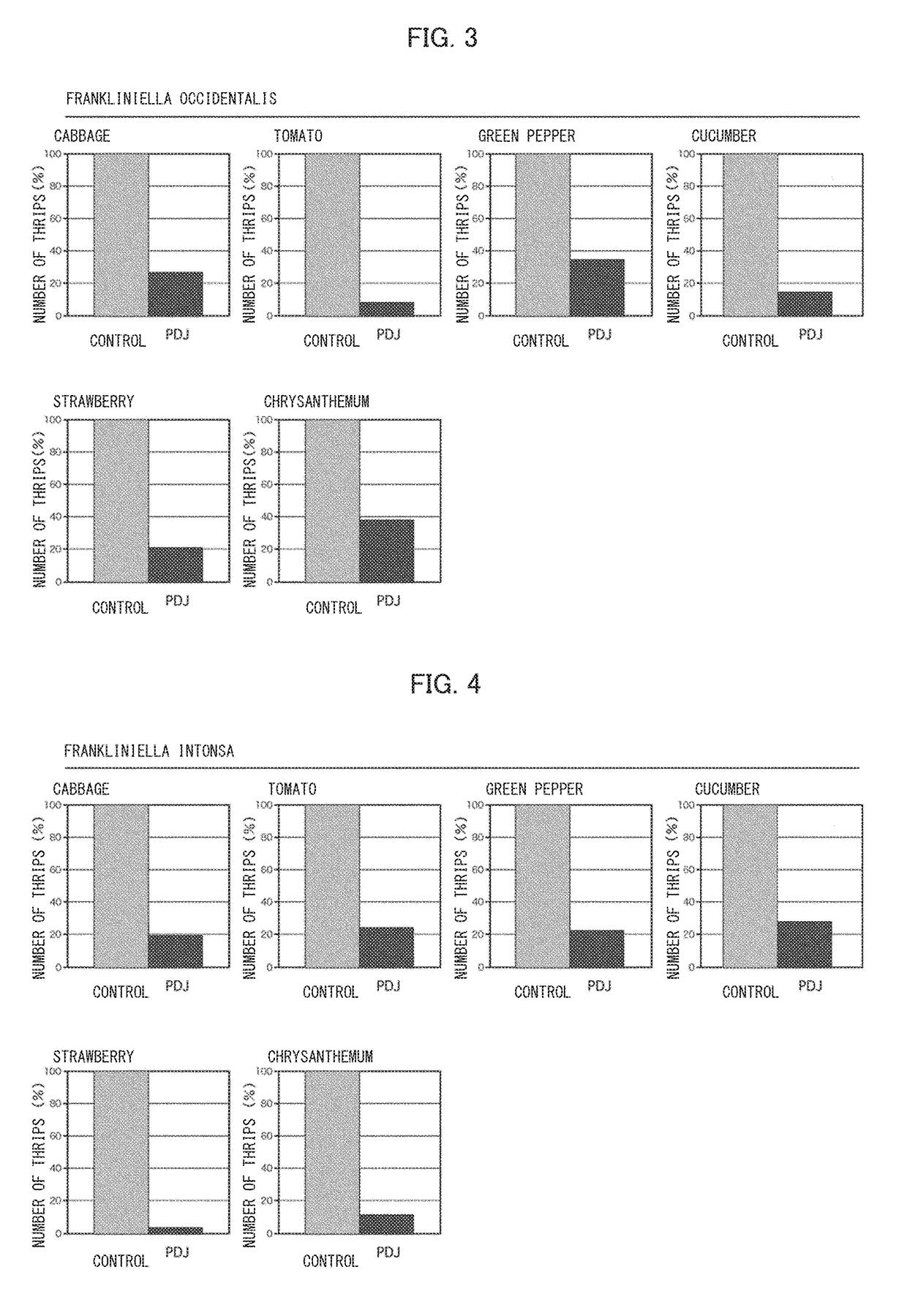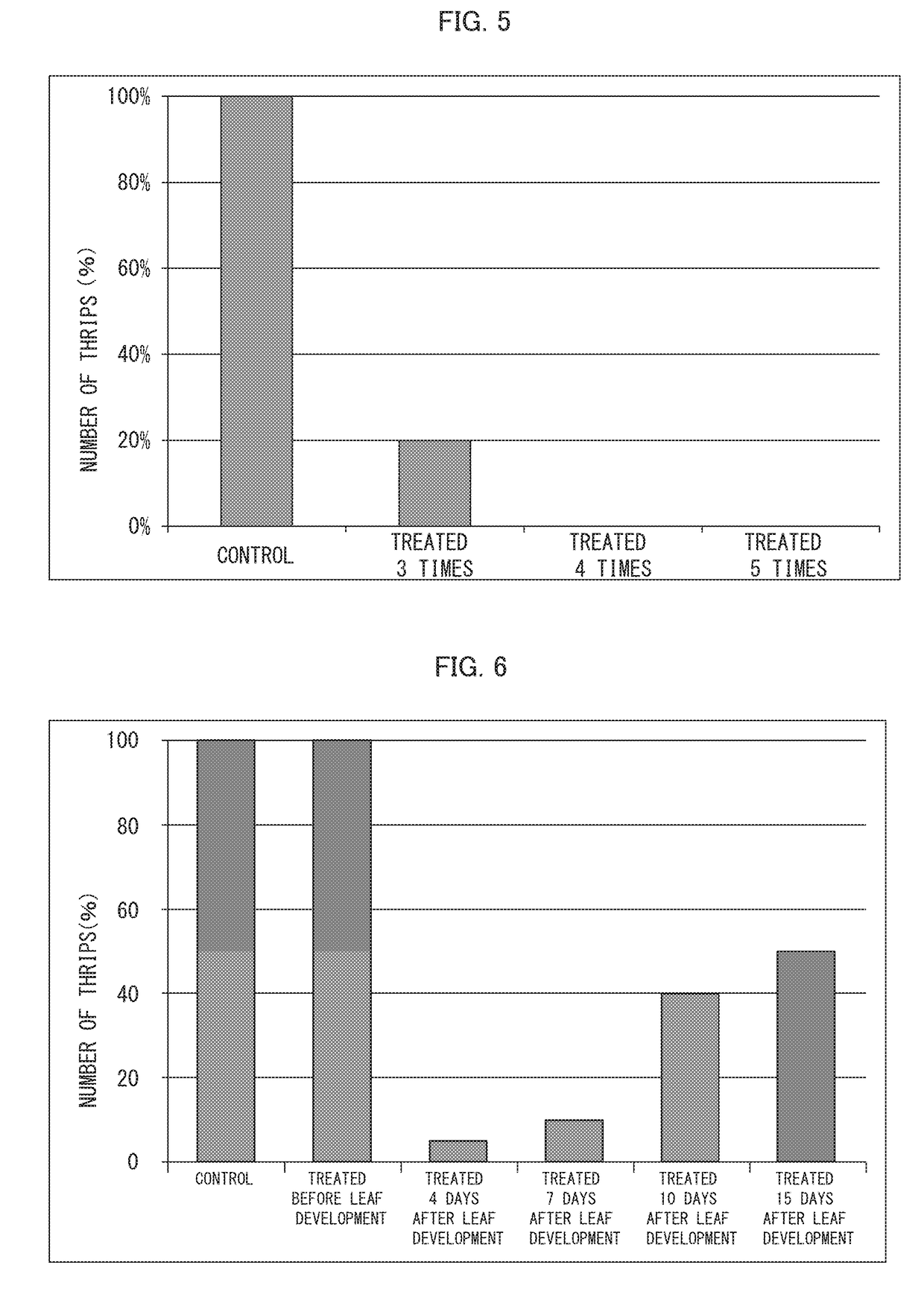Agent for controlling thrips and use thereof
a technology of thrips and control agents, applied in the field of thrips control agents, can solve the problems of difficult control, damage to the appearance of vegetables and fruits, and decline in the commercial value of vegetables and fruits, and achieve the effect of suppressing the negative impact of plant growth
- Summary
- Abstract
- Description
- Claims
- Application Information
AI Technical Summary
Benefits of technology
Problems solved by technology
Method used
Image
Examples
reference example 1
[0060]In a greenhouse whose room temperature was kept within a range of 20° C. to 25° C., 15 stocks of nappa cabbage (Brassica rapa var. pekinensis) one week after seeding were separated into the following 5 groups: (i) a control group of 3 stocks, (ii) a group of 3 stocks to be treated with 10 μM (25 ppm) prohydrojasmon (PDJ), (iii) a group of 3 stocks to be treated with 100 μM (254 ppm) PDJ, (iv) a group of 3 stocks to be treated with 10 μM (22 ppm) methyl jasmonate (JA), and (v) a group of 3 stocks to be treated with 100 μM (224 ppm) JA. The stocks in each of the above groups subjected to treatment were given the PDJ solution or JA solution at the above-described concentration, and caused to absorb the PDJ solution or JA solution through roots of the stocks. The stocks in the control group were given only water and caused to absorb water through roots of the stocks. Two weeks after the above treatment, aerial parts of the stocks in each of the 5 groups were harvested, and fresh w...
example 1
[0061]In a greenhouse whose room temperature was kept within a range of 20° C. to 25° C., two plant individuals of Arabidopsis thaliana three weeks after seeding, which were planted in different pots, respectively, were placed apart from each other such that a distance of approximately 30 cm was provided and kept between these plant individuals. Then, 100 μM PDJ solution was directly sprayed on one of the two plant individuals by use of a spraying device. On the other one of the two plant individuals, only water was sprayed similarly. This plant individual on which only water was sprayed was a control. Two days after the above treatment, 30 female adult thrips of Frankliniella occidentalis were released at a middle point between the two plant individuals. Twenty-four hours after that release of Frankliniella occidentalis, the number of thrips on each plant individual was counted so that which one of the plant individuals the thrips had moved to was found. With use of 100 μM JA solut...
example 2
[0062]In a greenhouse whose room temperature was kept within a range of 20° C. to 25° C., with regard to each of tomato (Solanum lycopersicum (family Solanaceae)), green pepper (bell pepper) (Capsicum annuum L. ‘grossum’ (family Solanaceae)), cabbage (Brassica oleracea var. capitata (family Brassicaceae)), cucumber (Cucumis sativus L. (family Cucurbitaceae)), strawberry (Fragaria×annassa (family Rosaceae)) and chrysanthemum (Chrysanthemum morifolium (family Asteraceae)), two plant individuals three weeks after seeding were placed apart from each other such that a distance of approximately 30 cm was provided and kept between these plant individuals. Then, 100 μM PDJ solution was sprayed on an entire aerial part of only one of the two plant individuals by use of a spraying device. On the other one of the two plant individuals, only water was sprayed by a similar method. This plant individual on which only water was sprayed was a control. Two days after the above spraying, 30 female ad...
PUM
 Login to View More
Login to View More Abstract
Description
Claims
Application Information
 Login to View More
Login to View More - R&D
- Intellectual Property
- Life Sciences
- Materials
- Tech Scout
- Unparalleled Data Quality
- Higher Quality Content
- 60% Fewer Hallucinations
Browse by: Latest US Patents, China's latest patents, Technical Efficacy Thesaurus, Application Domain, Technology Topic, Popular Technical Reports.
© 2025 PatSnap. All rights reserved.Legal|Privacy policy|Modern Slavery Act Transparency Statement|Sitemap|About US| Contact US: help@patsnap.com



